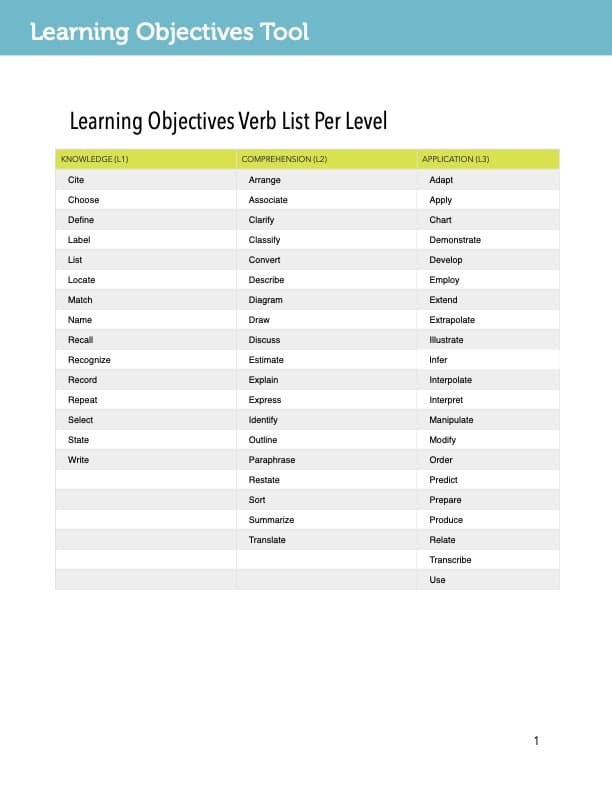
Entire books have been written around how to create effective learning objectives. We are going to keep this step somewhat simple. It’s important to create learning objectives that will guide your audience and set expectations for what they will learn by the end of the training. We will use objectives as a springboard for creating content and building activities and content that support the learning objectives.
In this phase of our project, we will identify specific performance criteria that can be measured both during and after the course. The Learning Objectives will provide us with a base on which to develop the course and assessment questions.
Purpose of Learning Objectives:
- Give the attendees a clear understanding of what will be covered in the course and in each lesson.
- Give the attendees a full understanding of what they will be expected to know or do when the course is complete.
- Help the instructional designer make sure all of the content has been included in the course.
- Help the instructional designer determine which components of the content are necessary and which are not, then begin organizing and chunking the lessons.
- Provide a starting point for determining assessment of skills.
Level of Instruction
Objectives were devised with regard to Bloom’s taxonomy. Bloom’s taxonomy is a way to classify learning objectives. It has six levels:
- (L1) – Knowledge: recall facts and basic concepts.
- (L2) – Comprehension: explain ideas or concepts.
- (L3) – Application: use information in new situations.
- (L4) – Analysis: draw connections between ideas or concepts.
- (L5) – Synthesis: justify a stand using concepts.
- (L6) – Evaluation: produce a new work using concepts.


